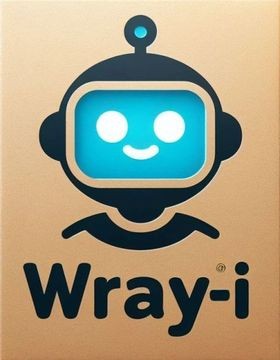The Rise of the Chief A.I. Transformation Officer: Navigating the Future of Work with Confidence
In the ever-evolving corporate landscape, roles like Chief Financial Officer (CFO) and Chief Technology Officer (CTO) have become staples in organisations worldwide. The CTO role, relatively younger than the CFO, emerged from the necessity for a senior executive to manage the 'Technology' aspect of the business with the same level of scrutiny and strategic oversight as the 'Finance' handled by the CFO.
As we stand on the brink of another transformative era, a new role is being discussed—the Chief A.I. Officer (CAIO). While the idea of a CAIO might seem logical given the pervasive influence of artificial intelligence (A.I.), it's crucial to consider whether this role should exist separately or within the purview of the CTO. However, the broader implications of A.I. and the anxiety it generates among employees necessitate a more nuanced approach. Enter the Chief A.I. Transformation Officer (CAITO).
The Impact of A.I. on the Workforce
Artificial intelligence is often heralded as a game-changer for businesses, promising increased efficiency, enhanced customer experiences, and new avenues for innovation. However, it also brings a significant amount of fear and uncertainty among employees. According to a Pew Research Center survey, 72% of Americans express concern about a future where robots and computers can perform many human jobs. This fear is not unfounded; a report by McKinsey Global Institute estimates that by 2030, up to 375 million workers (14% of the global workforce) may need to switch occupational categories due to automation and A.I.
The Root Causes of Job Anxiety
To understand the potential role of a CAITO, we must first examine why employees leave their jobs. Numerous studies highlight the following top reasons:
- **Lack of Career Progression**: A Gallup poll reveals that 87% of millennials rate "professional or career growth and development opportunities" as important in a job.
- **Lack of Inclusion**: Research from Deloitte shows that 39% of employees feel the greatest sense of belonging when their colleagues check in with them personally and professionally.
- **Fear of Redundancy**: With A.I. advancements, the fear of becoming obsolete is palpable. The World Economic Forum predicts that automation will displace 85 million jobs by 2025, although it will also create 97 million new roles.
- **Poor Leadership**: Gallup's "State of the American Manager" report indicates that 50% of employees leave their jobs "to get away from their manager."
The Cost of Employee Turnover
Employee turnover is costly. The Society for Human Resource Management (SHRM) estimates that replacing an employee can cost a company 6 to 9 months of that employee's salary on average. For high-turnover industries, the cost can be as high as 150% of an employee's annual salary. This includes costs related to recruiting, training, and lost productivity.
Introducing the Chief A.I. Transformation Officer (CAITO)
Given the multifaceted challenges posed by A.I., a new fractional role—Chief A.I. Transformation Officer (CAITO)—can bridge the gap between technological innovation and employee well-being. Here’s how this role can redefine the integration of A.I. in the workplace:
1. **Technical Advisory**: The CAITO would work closely with the CTO to identify and implement A.I. solutions that enhance business operations. This ensures that the technological advancements align with the company's strategic goals without creating unnecessary redundancies.
2. **Employee Education and Inclusion**: The CAITO's primary responsibility would be to demystify A.I. for all employees. By conducting comprehensive training programs, the CAITO can educate staff on how A.I. can enhance their roles rather than replace them. This training would focus on:
- **Upskilling and Reskilling**: Teaching employees new skills relevant to the evolving technological landscape.
- **Practical A.I. Applications**: Demonstrating how A.I. can streamline tasks and improve job performance.
- **Career Pathways**: Highlighting new career opportunities that emerge from A.I. integration.
3. **Fostering Inclusion and Belonging**: By involving senior staff in these training sessions, the CAITO can promote a culture of inclusion and support. This approach shows a commitment to employee development and reinforces that A.I. is a tool for empowerment, not replacement.
4. **Leadership and Support**: Strong leadership is crucial during transitions. The CAITO would ensure transparent communication, addressing fears and uncertainties head-on. This proactive approach can build trust and loyalty, reducing turnover and associated costs.
Conclusion
The role of the Chief A.I. Transformation Officer is not just about managing A.I. technologies but about guiding an organisation through the cultural and operational shifts that A.I. brings. By balancing technical expertise with a deep understanding of employee concerns, the CAITO can help create a workplace where A.I. is seen as an ally, not a threat. This not only enhances business performance but also fosters a more inclusive, engaged, and resilient workforce.
In an era where the only constant is change, the CAITO can be the anchor that helps organisations navigate the complexities of A.I. integration, ensuring that the future of work is both innovative and human-centric.


